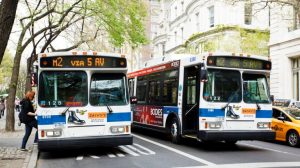
workers have died from Covid, according to the agency. Though transit jobs have traditionally been good jobs that are secure even in economic downturns, the pandemic highlighted the risks of working on a train or bus when other people work safely from home. “Lots of industries are having trouble recruiting workers,” said Ruth Milkman, a sociology professor at the City University of New York, adding that many people are not looking for jobs because they may have saved money during the pandemic or have to care for children or relatives. “We have a specific problem with these crew-related delays, and we are attacking that aggressively because we don’t want to lose ground,” said Janno Lieber, the M.T.A.’s acting chairman and chief executive officer.īut hiring transit workers is not easy when there is a national labor shortage. Still, the staffing shortages continue to cause thousands of subway and bus trips to be canceled every month, frustrating riders and hobbling the agency’s efforts to lure back the ridership it needs to address its financial woes. lifted a hiring freeze for certain workers in February after federal pandemic relief stabilized the agency’s finances and has made tackling crew shortages a priority.
#NY MTA BUS SALARY DRIVER#
The agency, which has canceled trips in recent weeks because of a driver shortage, is also hiring “for the foreseeable future as public transportation in the Puget Sound region continues to grow in 2022 and beyond,” said Sean Hawks, a spokesman.
#NY MTA BUS SALARY DRIVERS#
King County Metro, which serves the Seattle area, has hired back 200 part-time bus drivers who were laid off last year because of budget cuts.
#NY MTA BUS SALARY FULL#
Now, many are eager to fill their ranks and return to full service.Īmtrak, which did not hire workers for more than 16 months after slashing train service nationwide, saw a 10 percent drop in the number of train engineers and conductors from attrition and is in the process of hiring 200 people to fill openings, said a spokesman, Jason Abrams. Many transit agencies reduced staff or froze hiring in the early days of the pandemic as people stayed home and their ridership and revenue plummeted. So far, 20 retirees have taken up the offer. recently sent nearly 800 letters to train operators and conductors who had retired within the past three years, asking them to come back to work for up to $35,000 for three months. “In order for there to be sufficient service, there needs to be sufficient crews.” “It’s a big problem,” said Lisa Daglian, the executive director of the Permanent Citizens Advisory Committee to the M.T.A., a watchdog group. employs 3,195 train operators, 2,946 conductors and 11,850 bus drivers. The Metropolitan Transportation Authority, which runs New York’s subway and buses and is the nation’s largest transit agency, has accelerated hiring, but still has vacancies for more than 600 train operators, train conductors and bus drivers.
/cdn.vox-cdn.com/uploads/chorus_image/image/69337040/BusesRedesign_8.0.jpg)
It has led to canceled bus trips in Los Angeles and the Seattle area and caused unplanned gaps in transit service in Chicago that have drawn complaints from train and bus riders.

The staffing shortage has forced thousands of subway trains and buses to be canceled or delayed in New York. “It’s affecting communities - if we’re having shortages, that means it takes longer to get somewhere.” “I’ve never seen this type of shortage,” said John Costa, the international president of Amalgamated Transit Union, the largest union of transit workers in North America. The result is a transit worker shortage that has caused delays and reductions in bus and rail service across the country. The deadly outbreak has killed hundreds of frontline transit workers, led to widespread absences because of Covid-19, prompted many to retire and spurred vaccine mandates in some cities that have forced unvaccinated transit workers to take leaves. The nation’s transit agencies are rushing to hire train operators, bus drivers, mechanics and other workers as they try to fill critical vacancies and rebuild a work force that has been battered by the pandemic.


 0 kommentar(er)
0 kommentar(er)
